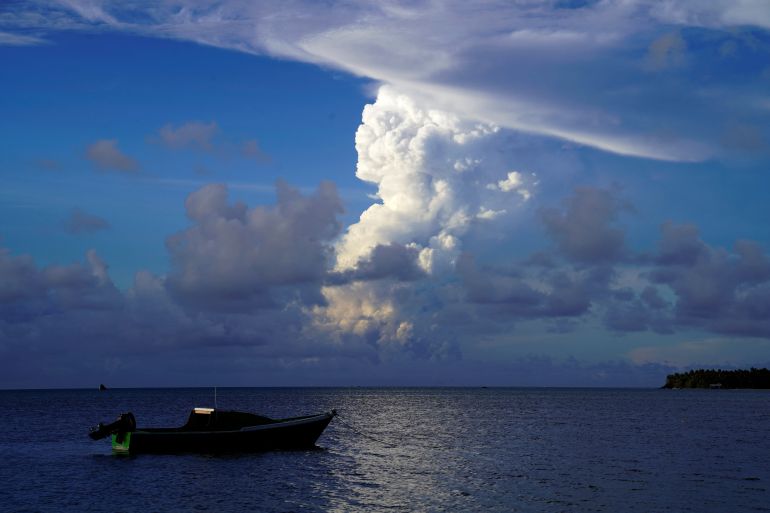New Pacific island rises after underwater volcanic blast
The tiny island came into existence 11 hours after a volcanic eruption and grew to 24,000-square metres in size.

A new island has emerged in the southwest Pacific Ocean after a Home Reef underwater volcano erupted oozed lava and ejected ash and steam.
The island came into existence 11 hours after the eruption on September 10, which discoloured the surrounding water, the US-based space agency NASA said in a statement.
Keep reading
list of 4 itemsPhotos: Volcano near Iceland’s main airport erupts
Volcano erupts on Japanese island Kyushu, prompting evacuations
Tonga volcano: What now?
NASA was able to photograph the new land mass with satellites. The volcano is situated in the Home Reef seamount near the central Tonga island.
“The Operational Land Imager-2 (OLI-2) on Landsat 9 captured this natural-color view of the young island on September 14, 2022, as plumes of discolored water circulated nearby,” the statement said.
“Previous research suggests that these plumes of superheated, acidic seawater contain particulate matter, volcanic rock fragments, and sulfur.”
On September 14, Tonga Geological Services estimated the size of the island to be 4,000 square metres (43,055 square feet), with an elevation of 10.1 metres (33 feet) above sea level. However, by September 20 the agency said the island had grown substantially to 24,000 square metres (258,333 square feet).

NASA said while islands created from underwater volcanos do not last long, some can go on to exist for years.
“The volcano poses low risks to the aviation community and the residents of Vava‘u and Ha‘apai… All mariners are, however, advised to sail beyond 4 kilometers (2.49 miles) away from Home Reef until further notice,” TGS noted.
Seismic activity is a common occurrence around Tonga, an archipelago nation with 171 islands and a population of 100,000.
Previously, Home Reef volcanos erupted in 1852, 1857, 1984 and 2006 – with the last two eruptions producing islands 50 to 70 metres (164-229 feet) high, NASA said.
The Home Reef, a seafloor ridge from Tonga to New Zealand, has the highest concentration of underwater volcanos in the world, according to the space agency.